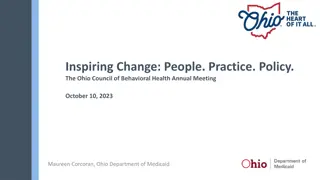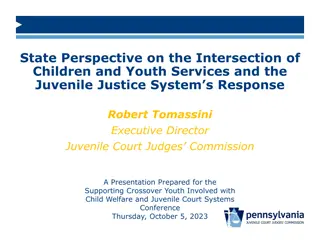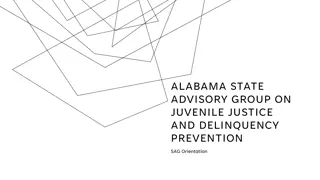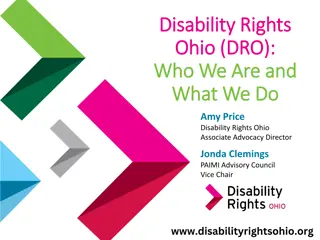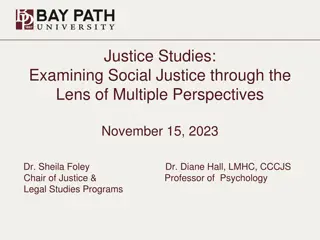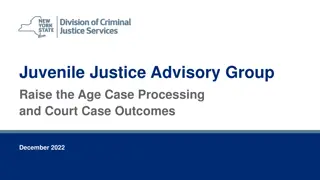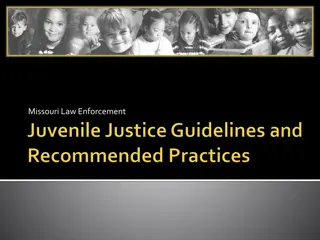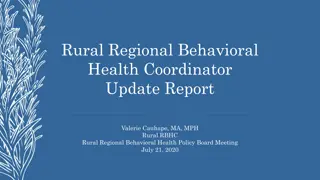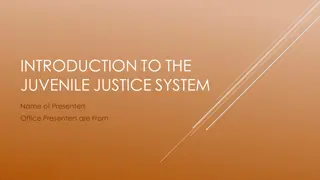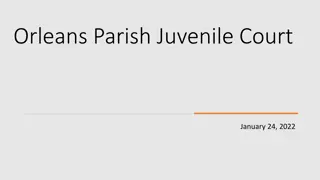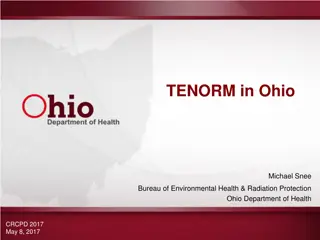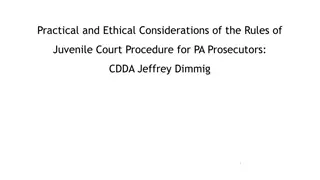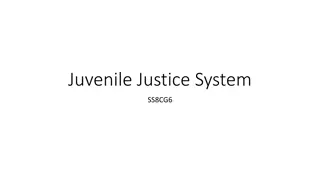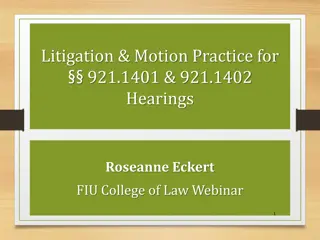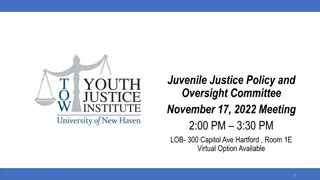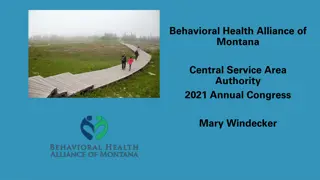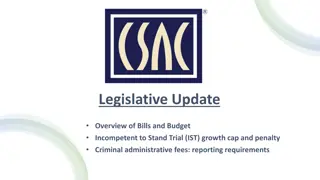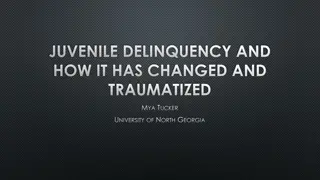Ohio Juvenile Justice Work Group: Behavioral Health Strategies 2014 Review
The Ohio Juvenile Justice Work Group made significant progress in 2014 by focusing on improving mental health services, reducing seclusion of youth, enhancing quality assurance, implementing prevention strategies, and immediate intervention protocols. Emphasis was placed on individualized treatment plans, interdisciplinary collaboration, and continuous monitoring to address behavioral issues effectively.
Download Presentation

Please find below an Image/Link to download the presentation.
The content on the website is provided AS IS for your information and personal use only. It may not be sold, licensed, or shared on other websites without obtaining consent from the author. Download presentation by click this link. If you encounter any issues during the download, it is possible that the publisher has removed the file from their server.
E N D
Presentation Transcript
Ohio Juvenile Justice Work Group: Behavioral Health Bob Stinson, Psy.D, J.D., LICDC-CS, ABPP Board Certified Forensic Psychologist Attorney at Law Licensed Independent Chemical Dependency Counselor Clinical Supervisor
A Look Back: 2014 [A]greed to improve mental health services and reduce seclusion of youth who are on the mental health caseload Prevention Immediate intervention Post-crisis strategies
Quality Assurance (QA) A Look Back: 2014 Quality Improvement (QI) Peer review Case formulations Fidelity of treatment provided to treatment models Treatment planning Treatment teams Behavior contracts Suicide prevention Discipline for those with mental health problems (Psychotropic medications and sufficiency of psychiatric resources)
Necessary A Look Back: 2014 Narrowly tailored Least intrusive means to address / redress ongoing problems Monitoring until new processes persisted for 6 months
Prevention Strategies Multiple sources of information Biopsychosocial Assessment with Clinical and Diagnostic Formulation Diagnostic formulation Clinical formulation Mapped onto an individualized treatment plan Assessments include solid clinical / diagnostic formulation Treatment plans reflect information from the clinical / diagnostic formulation Quality Assurance Using QA Tools Individual treatment (session content) aligned with treatment goals Group treatment displays fidelity to design Training Required
Immediate Intervention Strategies Reduce Reliance on Seclusion Interdisciplinary treatment team decision Reduce Duration of Seclusion Red flag reviews 72 hours of seclusion in a rolling 30-day period Safe to release process Every 2 to 3 hours Administrative oversight After 24 hours Eliminate disciplinary seclusion Training and QA Required
Timely review of antecedents and function of behavior Timely review of treatment goals, objectives, and interventions Fortify where not sufficient Revise where ineffective Include skill development Include, when needed, environmental changes Consider using a behavior contract Increase intensity and frequency of treatment (e.g., daily homework, meeting several times per week) Not an option to do nothing Post-Crisis Strategies Special Review Teams Led by a psychologist Focused on understanding and addressing behavior (cause and function) Specially designed interventions (e.g., behavior contract, staff mentor, unit change, skill building, referral to a mental health facility, etc.) Training and QA Required
Systems Facilities / Environment Obstacles Staffing Safety
Systems & System Collaboration (lack of) Mental health (state department, hospital systems and large agencies, universities, private sector) Developmental disabilities Children and Youth Job and Family Services / Children Services Education / Higher Education Medicaid / funding Courts prosecution and defense Advocacy and mentoring Private sector specialists, etc., etc.
Facilities / Environment Huge limiting factor Ideal = Less correctional and more rehabilitative / therapeutic Allowing for gradual transitions and introductions to new people Smaller (big = bad; small = safer) Emphasis on transferrable skills Closer to home Can t have everything (e.g., culinary arts, carpentry, electrical, welding) at each facility but can we have something everywhere
Staffing Hiring process (efficient / timely) Selection process Preservice Supervision Training Youth (adolescents, specialty problems, non-verbal approaches) Staff (self-care and compassion fatigue; what does appropriate engagement look like) (line staff, middle management, administrators) Retention process (Comparable to hiring process? Who s responsible?) Under-staffed
Safety Scared kids scare staff. Scared staff scare kids. Gangs protect kids Safety has to come first. Prerequisite to everything else. Easiest thing for all parties to agree on. Can t not put out fires; so have to avoid fires.
Recommendations Prevention Intervention Behavioral Health Services Post-Crisis Strategies Training QA / QI Multi-system Collaboration Facility / Environment Redesign Staffing Safety
Bob Stinson Stinson@StinsonAndAssociates.com Stisnon@ForumOhio.com 614-309-9727



